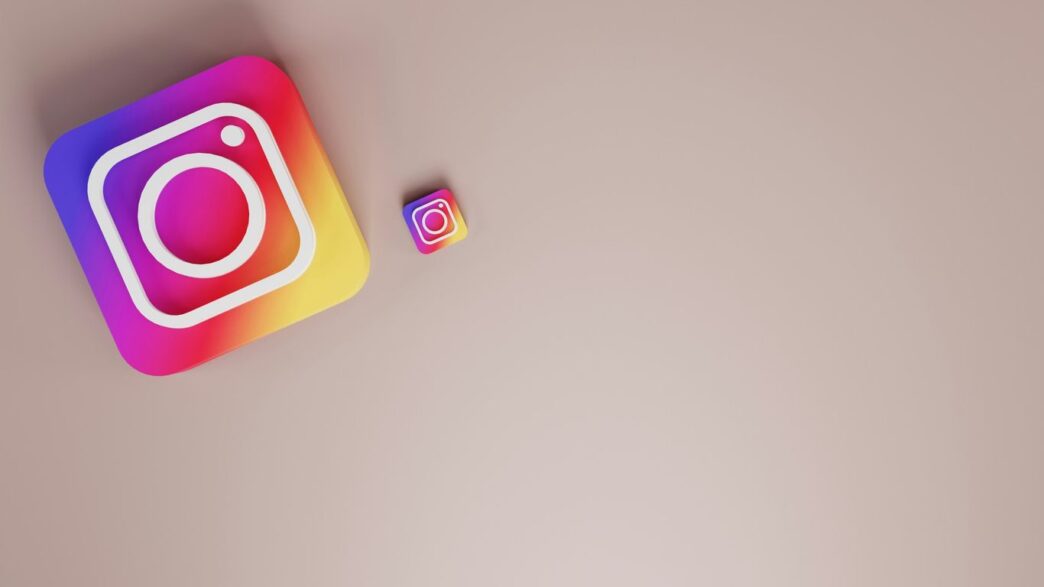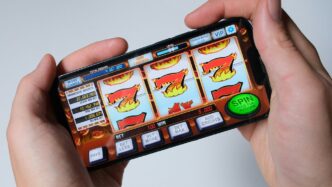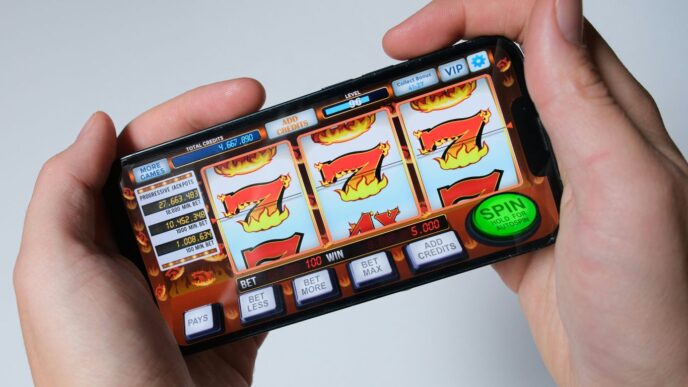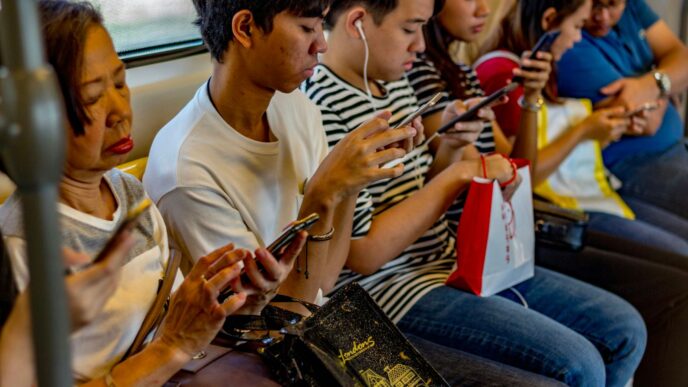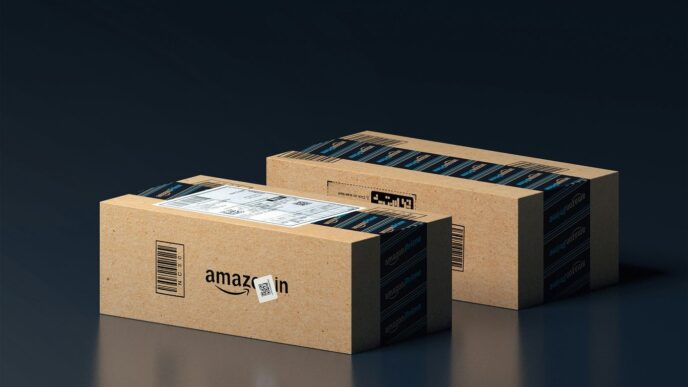Looking back at 2016 social media trends feels like peeking into a time capsule. It was a year where things really started to shift, setting the stage for how we interact online today. Many of the ways brands connect with us, and how we discover new things, were just getting going back then. It’s interesting to see how those early steps have led to where we are now, with social media being such a big part of our daily lives. Let’s revisit some of the biggest shifts from that year.
Key Takeaways
- Live streaming became a big deal, making content feel more immediate and real.
- Influencer marketing grew, with brands teaming up with everyday people, not just celebrities.
- User-generated content helped brands seem more authentic by showing real customer experiences.
- Social commerce made it super easy to buy things directly through social apps.
- Personalized feeds and AI started showing us content and ads that felt more relevant to our interests.
1. Live Streaming
Wow, 2016 was definitely the year live streaming went from a cool idea to something everyone was actually doing. It felt like overnight, platforms like Facebook Live and Periscope really took off. Suddenly, brands and regular folks could just hit ‘go live’ and share what was happening, right then and there. It was pretty wild seeing how people used it – from Buzzfeed counting rubber bands around a watermelon (which somehow got almost 800,000 viewers!) to CNN broadcasting a guy climbing Trump Tower, pulling in over 8 million views.
The biggest thing about live streaming was how it changed the game for audience interaction. People weren’t just passively watching; they were commenting, asking questions, and even telling the camera person where to point. It felt way more real and immediate than anything before. For marketers, this meant they could talk directly to their audience, answer questions on the spot, and show off products or events without all the fuss of editing and fancy graphics. It was a way to be totally present and unfiltered.
Here’s why it was such a big deal:
- Real-time Engagement: Viewers could react and interact instantly, making them feel part of the action.
- Authenticity: The unpolished, in-the-moment nature felt more genuine than pre-recorded videos.
- Accessibility: Anyone with a smartphone could broadcast, lowering the barrier to entry for content creation.
- Direct Feedback: Brands could get immediate reactions and answer questions, which was gold for understanding their audience.
It really felt like the future of social media, and honestly, it still is. It just made everything feel so much more connected and alive.
2. Influencer Marketing
Back in 2016, influencer marketing really started to hit its stride. It wasn’t just about big celebrities anymore; brands began noticing that people with smaller, more focused followings – we’re talking micro-influencers – could actually get better results. These folks had a tighter connection with their audience, making sponsored posts feel more like a friend’s recommendation than a paid ad. It was a big shift from the old days of just throwing money at famous faces.
This trend really changed how brands thought about advertising. Instead of just broadcasting messages, they started partnering with individuals who had built genuine trust. This meant brands could reach very specific groups of people who were actually interested in what they offered. It was a smarter way to spend marketing money, and it felt more authentic to the people seeing the ads.
Here’s a quick look at how things were shaking out:
- Celebrities: Had huge followings (over a million) but usually only got a 1-2% engagement rate.
- Micro-Influencers: Had smaller followings (5,000-100,000) but saw much higher engagement, around 6-8%.
- Nano-Influencers: Even smaller (under 5,000 followers) could get 8-10% engagement.
Basically, the lesson learned was that authenticity and a real connection with the audience mattered way more than just having a massive name. This focus on relatable voices and genuine partnerships is something that still shapes how brands work with influencers today.
3. User-Generated Content

Remember when brands used to control every single thing that got posted about them? Yeah, that started to feel pretty old-fashioned back in 2016. People were getting tired of perfectly polished ads and wanted to see what real folks thought. That’s where user-generated content, or UGC, really took off. It’s basically content created by customers, not the company itself – think photos, videos, reviews, you name it.
Brands realized that seeing a product used by an actual person, not a model, built way more trust. It felt more honest, you know? Instead of spending a ton of money on professional shoots, companies started encouraging their fans to share their own experiences. This could be through hashtag campaigns, contests, or just by asking people to tag them in their posts. It was a win-win: brands got authentic content, and customers felt heard and connected.
Here’s why it was such a big deal:
- Authenticity Boost: UGC showed products in real-life situations, making them seem more relatable and trustworthy than staged photos.
- Community Building: When brands shared customer content, it made their followers feel like part of a community, strengthening loyalty.
- Cost-Effective: It was a smart way for businesses to get a steady stream of content without breaking the bank.
- Social Proof: Seeing others use and enjoy a product acts as a powerful recommendation, influencing potential buyers.
Think about it: a glowing review from a stranger often carries more weight than a company’s own marketing spiel. UGC tapped into that powerful word-of-mouth effect, just on a much bigger, digital scale. It wasn’t just about getting likes; it was about building genuine connections and proving that real people loved what the brand had to offer.
4. Social Commerce

Remember when scrolling through social media was just about seeing what your friends were up to? Yeah, 2016 was the year that changed big time. Suddenly, your favorite apps weren’t just for sharing photos; they started looking a lot like bustling marketplaces. Brands got smart and figured out how to let you buy stuff without even leaving the app. This was when social feeds stopped being purely social and started doubling as stores.
It was all about making things super easy and fast. Think about it: you’d see a cool product in your feed, maybe in a video or a post, and BAM! There’d be a "Shop Now" button right there. No more clicking away to a separate website, filling out endless forms, and waiting ages. It shortened the whole process from seeing something you liked to actually owning it. This made impulse buying way easier, and honestly, kind of normal. Limited-time offers and "only a few left!" messages really played on that fear of missing out, pushing people to click that buy button faster.
Here’s how it really changed things:
- Shoppable Posts: These let you tag products directly in photos or videos. You’d see a dress on your favorite influencer, tap the tag, and boom – you’re looking at the product page, ready to buy.
- Direct Checkout: Some platforms started letting you complete the entire purchase within the app itself. This cut down on friction and made buying feel almost effortless.
- Flash Sales: Brands used these to create a sense of urgency, often promoted heavily on social media, encouraging immediate purchases.
This whole shift meant the customer journey got way shorter. Before, you might search, compare, read reviews, and then buy. In 2016, discovery, checking it out, and buying could all happen in the same scroll. Brands learned to show off their products in real-life settings, sometimes through live demos or by partnering with influencers. They could even get instant feedback on new items right there in the comments. It was a big step towards making online shopping feel more integrated and immediate, a trend that continues to shape how we shop today. Social commerce is rapidly transforming into the new marketplace, generating billions annually and projected to reach trillions by 2026. This significant growth highlights the increasing integration of shopping experiences within social media platforms.
5. Augmented Reality
Remember when you could only imagine what a new couch would look like in your living room? In 2016, augmented reality (AR) started making that imagination a reality, right on our phones. It wasn’t just about fun filters anymore; brands began using AR to let people try things out before they bought them. Think about trying on glasses virtually or seeing how a piece of furniture would fit in your space. This ability to ‘try before you buy’ really changed the game for online shopping.
AR helped bridge the gap between looking at something online and actually owning it. It made shopping feel less like a gamble and more like a confident decision. People were more likely to click ‘buy’ when they could visualize the product in their own world.
Here’s how AR made a difference:
- Virtual Try-Ons: Customers could see how clothes, makeup, or accessories looked on them without leaving their homes. This cut down on returns for brands and boosted shopper confidence.
- Product Visualization: Imagine seeing how a new TV would fit on your wall or how a rug would look on your floor. AR made this possible, making online browsing way more interactive.
- Interactive Campaigns: Brands got creative, turning ads into mini-games or experiences. Users could interact with virtual objects or explore products in new ways, making marketing way more engaging than just scrolling past static images.
6. Personalized Feeds
Remember when your social media feed felt like a surprise party every time you logged in? Back in 2016, that feeling really started to change. Platforms got way smarter about figuring out what you actually wanted to see. Instead of just showing you posts in the order they were made, they started using algorithms – basically, smart computer programs – to guess what would grab your attention.
These algorithms looked at a bunch of things to decide what to show you. They checked out what you liked, what you shared, and even how long you paused on certain posts. The goal was to make your feed feel like it was made just for you. It meant that your Instagram or Twitter scroll looked totally different from your friend’s, even if you were using the same app at the same time.
Here’s a look at how this shift happened:
- Content Tailoring: Platforms started sorting users into groups based on their interests, often without us even realizing it.
- Predictive Nudges: They began sending notifications at times they thought you’d be most likely to engage, like a gentle reminder about something you might have forgotten.
- Smarter Ad Placement: Ads became more relevant because the systems learned your behavior and preferences.
This move towards personalized feeds meant that every scroll felt more relevant and engaging, making us spend more time on the apps. It was a big deal because it changed social media from a general broadcast to a more one-on-one conversation between the platform and each user. It’s the reason why today, when you open an app, it feels like it already knows what you’re into.
7. Artificial Intelligence
Okay, so 2016 was kind of a big year for AI creeping into our social media feeds, even if we didn’t always realize it. Remember how your feed started feeling… different? Less like a straight timeline of what your friends posted and more like a curated selection of stuff the platform thought you’d like? Yeah, that was AI getting to work.
Basically, these platforms started using smart computer programs to figure out what you liked. They looked at what you clicked on, what you shared, how long you looked at a post, and even what you didn’t interact with. All this data helped them build a picture of your interests. Then, they used that picture to decide what to show you next. It made scrolling feel more personal, but also a bit like the app was trying to guess your thoughts.
Here’s a peek at how AI started showing up:
- Feed Algorithms: Instead of just showing posts in order, AI started sorting and prioritizing content it predicted you’d find interesting. This meant more relevant posts, but also less chance of seeing something unexpected from a friend.
- Chatbots: This is where those automated customer service helpers really took off. Brands started using AI-powered chatbots on platforms like Facebook Messenger to answer common questions instantly. It was the start of us expecting brands to be available 24/7.
- Ad Targeting: AI got really good at learning user behavior. This meant ads became way more specific, showing you things you’d actually shown interest in, sometimes a little too well.
It wasn’t just about showing you more stuff you liked, though. AI was also quietly sorting users into different groups based on interests, and even figuring out the best times to send you notifications. It was all happening behind the scenes, making our social media experience feel more tailored, and honestly, a little bit magical.
8. Video Content
Okay, so let’s talk about video. If you were online in 2016, you definitely saw it everywhere. It wasn’t just a little bit more video; it was a huge shift. Brands and regular folks alike started moving away from just typing stuff or posting a single picture. You needed something more to grab people’s attention as they were scrolling through their feeds.
Video content became the undisputed king of engagement. It’s just more interesting, right? Seeing something in motion pulls you in way more than a still image. Platforms like Facebook and Instagram really started pushing their own video features, and guess what? They gave those videos better reach. People just couldn’t help but hit play, and that simple action led to way more likes, comments, and shares than static posts ever did. Some reports even said video content got something like 1200% more shares than text and image posts combined!
Here’s a rough idea of how it stacked up:
| Content Format | Average Shares (2016) |
|---|---|
| Static Image | 20 |
| Text Post | 15 |
| Video | 250 |
But it wasn’t just pre-recorded stuff. Live video really exploded. Suddenly, brands could go ‘live’ to show off new products, answer questions right then and there, or give people a peek behind the scenes at an event. This real-time aspect added a whole new level of excitement. You never quite knew what might happen, and that unpredictability kept audiences hooked. Facebook Live, Twitter’s Periscope, and Instagram’s own live tools all opened up new ways for brands to connect with people in the moment. It was all about being raw, authentic, and sometimes a little messy. This move towards more genuine content was a big deal for social media trends.
What made video so effective in 2016?
- It’s more engaging: People naturally pay more attention to moving pictures.
- Platforms favored it: Social media sites gave video more visibility.
- It feels real: Especially live video, it offers an unfiltered look at things.
- It’s shareable: Exciting or interesting videos get passed around much more easily.
Brands that jumped on the video bandwagon early definitely saw the benefits. It was clear that if you weren’t creating video content, you were falling behind.
9. Real-Time Responses
Remember when waiting days for a brand to get back to you on social media was the norm? Yeah, 2016 was the year that started to feel seriously outdated. People got used to instant gratification with pretty much everything else in their lives, and they started expecting it from brands online too. The expectation shifted from ‘eventually’ to ‘right now’.
This wasn’t just about customer service, though that was a huge part of it. It was about brands being present and engaged in the moment. Think about it: if someone commented on your post, or even sent a quick question, a slow response felt like a missed connection. Brands that jumped on this trend were the ones who really started to stand out. They were the ones who felt more human, more accessible.
Here’s what that looked like:
- Faster Problem Solving: When a customer had an issue, they could tweet about it and get a fix within minutes, not days. This saved a lot of headaches for everyone involved.
- Building Community: Quick replies to comments and questions made people feel heard and valued. It turned passive followers into active community members.
- Adapting on the Fly: Brands could monitor conversations and adjust their messaging or even campaigns in real-time based on what people were saying. It was like having a live focus group.
This shift meant social media wasn’t just a broadcast channel anymore. It became a two-way street, a place for actual conversations. Brands that figured out how to respond quickly and authentically were the ones who built stronger relationships and, let’s be honest, probably sold more stuff too.
10. Word-Of-Mouth Marketing
Back in 2016, word-of-mouth marketing really started to shift gears. It wasn’t just about people chatting over the fence anymore; a single post could reach hundreds, even thousands, in a flash. Brands had to pay attention to what was being said, and more importantly, they had to jump into the conversations.
Responding to feedback, both good and bad, became a major part of how brands connected with people. It turned out that encouraging happy customers to share their experiences often worked way better than traditional ads. Plus, when brands actually listened and replied to comments, it built a lot more trust.
Here’s how it played out:
- Listening In: Many companies started using social listening tools to keep tabs on mentions and conversations happening online. This helped them catch issues early.
- Joining the Chat: Instead of just broadcasting messages, brands learned to engage. This meant answering questions, addressing complaints, and even just chiming in on relevant discussions.
- Customer Stories: Brands began actively encouraging satisfied customers to share their positive experiences. These authentic stories often carried more weight than polished marketing campaigns.
Think about it: if you’re looking for a new restaurant, are you more likely to trust a slick TV ad or a recommendation from a friend (or a friend’s friend online)? That’s the power of word-of-mouth. In 2016, this kind of organic sharing really started to influence purchasing decisions, and research from that time shows how much electronic word-of-mouth impacts what people buy. Brands that got good at participating in these online discussions, rather than trying to control them, saw the biggest long-term gains.
Wrapping It Up: What 2016 Taught Us
Looking back at 2016, it’s pretty clear how much social media changed things. Trends like influencers, video, and even shopping right from your phone started to really take hold back then. Brands learned to listen more and users got used to seeing stuff that actually fit what they liked. It wasn’t just about posting anymore; it became a place for quick chats, personalized content, and a constant back-and-forth. These ideas from a few years ago are still a big part of how we use social media today, and honestly, they’re just getting more creative and mixed into our daily lives. It’s wild to think how far we’ve come.
Frequently Asked Questions
What was the biggest change in social media marketing in 2016?
In 2016, social media marketing really started to focus on making things feel more real and personal. Instead of just showing polished ads, brands began using live videos, content made by regular users, and working with influencers who felt like everyday people. This made connections with customers much stronger.
How did shopping change on social media in 2016?
Shopping on social media became way easier in 2016. Platforms like Instagram and Facebook added ‘buy now’ buttons right on posts. This meant people could buy things they liked without even leaving the app, making impulse shopping super simple.
What role did influencers play in 2016?
Influencer marketing grew a lot in 2016. Brands realized that people trusted recommendations from regular folks with smaller, dedicated followings (called micro-influencers) more than big celebrities. This made partnerships feel more genuine and effective.
How did video content evolve in 2016?
Video content really took off in 2016, especially live video. People started preferring unedited, spontaneous videos over perfectly produced ones. Platforms like Facebook Live and Instagram Stories made it easy for anyone to share moments as they happened.
What is user-generated content and why was it important in 2016?
User-generated content means posts, photos, or videos created by regular users, not the brand itself. In 2016, brands saw how valuable this was because it felt authentic and trustworthy. It showed products being used in real life and helped build a stronger community around the brand.
How did social media platforms use AI and personalization in 2016?
In 2016, artificial intelligence (AI) started powering personalized experiences. Social media feeds began showing you more of what you liked, and ads became more targeted based on your interests. AI also helped power chatbots for quicker customer service, making brands feel more available.


